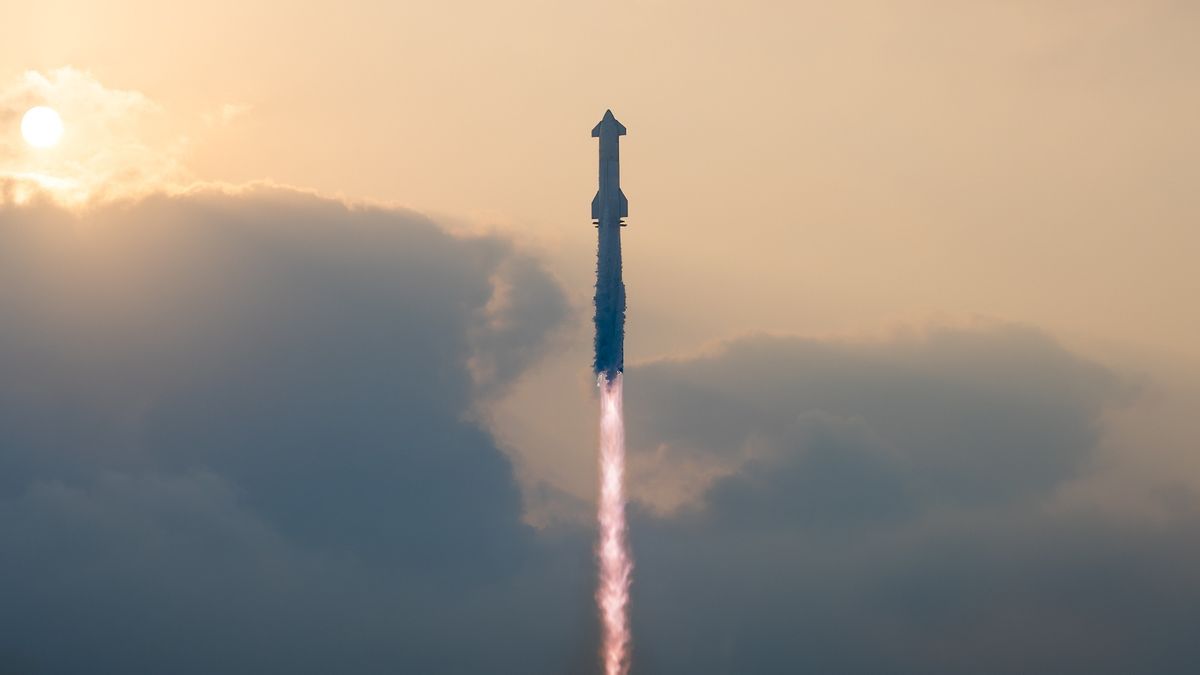SpaceX's Starship rocket managed to return from space at hypersonic speed and landed in the Indian Ocean on Thursday, June 6. The rocket completed a full-test mission worldwide on its fourth attempt. This controlled landing is the latest achievement in the SpaceX rocket development campaign led by Elon Musk, which aims to build reusable satellite launchers and lunar landers.
Previous test missions ended with Starship exploding or destroyed. Elon Musk has said that SpaceX plans to carry out at least six Starship test flights this year, and more in the years to come, as it faces pressure from NASA to show that these rockets can safely send crews of astronauts to the lunar surface.
This two-stage rocket system, which is nearly 400 feet (120 meters) high, consists of a Starship ship mounted on a Super Heavy booster rocket. At 7:50 a.m. CDT (12:50 GMT), the rocket glided from SpaceX's launch site, Starbase, near Boca Chica Village in South Texas, sending strong shock waves that burst through the morning fog on Teluk Beach.
Starship weighs 5000 tons on liftoff pic.twitter.com/HSxBYquSNK
— Elon Musk (@elonmusk) June 6, 2024
Starship we say 5000 tons on liftoff pic.twitter.com/HSxBYquSNK
Super Heavy was detached from the Starship top stage at an altitude of 74 km (46 miles), as Starship started its own engine to climb further into space. Meanwhile, Super Heavy returned to the Gulf of Mexico and made a soft landing, indicating landings that should have been on the ground.
In space, SpaceX's live broadcast shows Starship, equipped with an onboard camera, sliding about 16,000 miles (25,750 km) per hour at an altitude of about 200 km (125 miles) on its way to the Indian Ocean to return to Earth, setting up a key demonstration of a reusable design.
The rocket's first launch in April 2023 exploded minutes after taking off about 25 miles (40 km) above ground, while the second attempt in November exploded after reaching space. A third test flight in March managed to reach further but broke during atmospheric reentry of about 64 km (40 miles) above the Indian Ocean.
On Thursday, Starship appears to have overcome the technical challenges of the past. About 45 minutes after the flight, the onboard camera showed a superheated plasma layer forming around the Starship exterior - marking the start of an incredible heat decline through Earth's atmosphere in orange, red, purple, and green.
As Starship's decline was slowed down by hard atmospheric friction, pieces of metal and hexagonal heat shield tiles began to be released and parts of the rocket's directed flex were unfolded into a skeleton, although still functioning.
Starship restarted the engines to reverse the position in the decline, as will be done for land landings or on the moon, then landed in the Indian Ocean, as confirmed by a visible wave of water through a damaged and debris-covered onboard camera lens.
"Despite losing many broken tiles and spots, Starship managed to land gently in the ocean!" tweeted Elon Musk, CEO of SpaceX, who has said that Starship's reentry was the biggest goal of this mission, posting on social media after landing.
This rocket is largely covered with hundreds of small black tiles designed to protect against extreme heat faced when diving through Earth's atmosphere at hypersonic speeds.
Intended to be cheaper and more powerful than SpaceX's flagship rocket Falcon 9, a fully reusable Starship design represents the future of the company's satellite launch and astronaut business. This will be used by NASA in the coming years to land astronauts on the moon for the first time since 1972.
SEE ALSO:
Much is at stake in SpaceX's development of Starship, which NASA relies on in an attempt to send astronauts back to the moon by 2026 in competition with China, which plans to send astronauts there by 2030. China has made some recent progress in its lunar program, including a second landing on the far side of the moon on a sampling mission.
Although Starship's development appears faster than any other rocket program, it's slower than Musk envisioned. A Japanese billionaire who in 2018 paid to fly with Starship around the moon, which was expected last year, canceled his flight last week, citing schedule uncertainty.
Musk's push to build a Starship has quickly endangered SpaceX workers in Texas and California.
Musk, who founded SpaceX in 2002, has said that Starship should be launched hundreds of times before transporting humans, suggesting that it may take years before these rockets carry crews or land astronauts on the lunar surface.
SpaceX routinely transports astronauts to and from the International Space Station in low-Earth orbit for NASA using its Crew Dragon capsule, launched aboard the Falcon 9 rocket. So far, no private company has ever sent humans to the moon.
The English, Chinese, Japanese, Arabic, and French versions are automatically generated by the AI. So there may still be inaccuracies in translating, please always see Indonesian as our main language. (system supported by DigitalSiber.id)


















